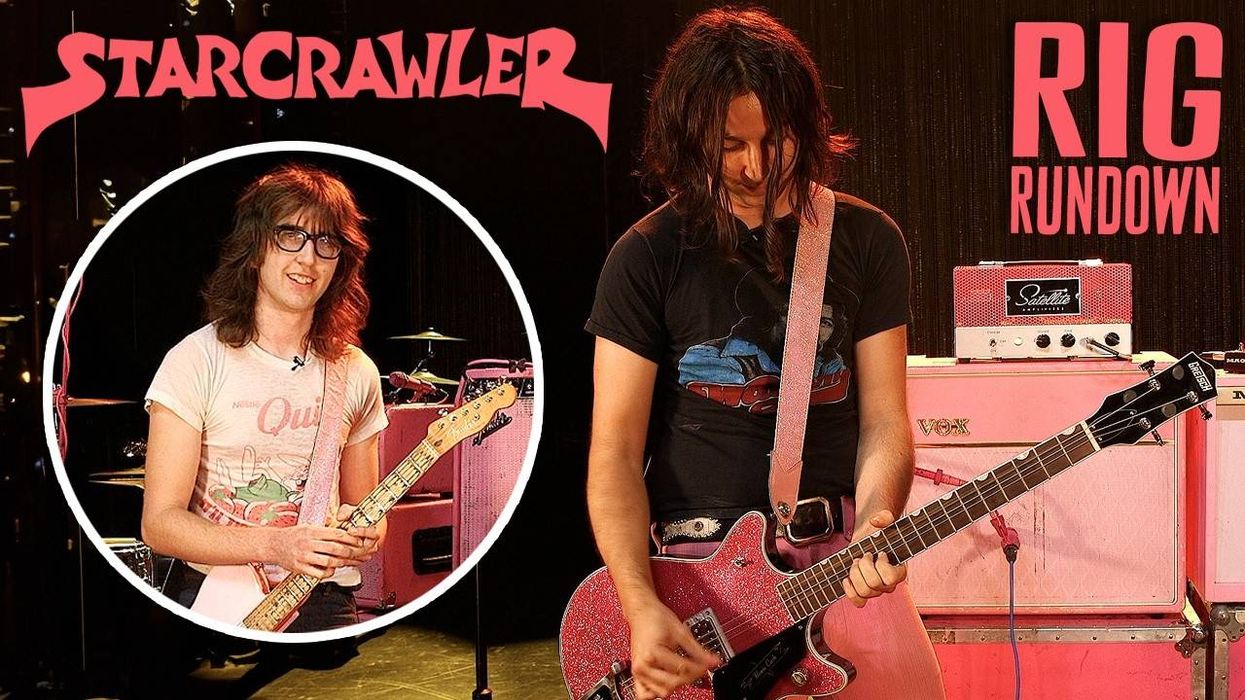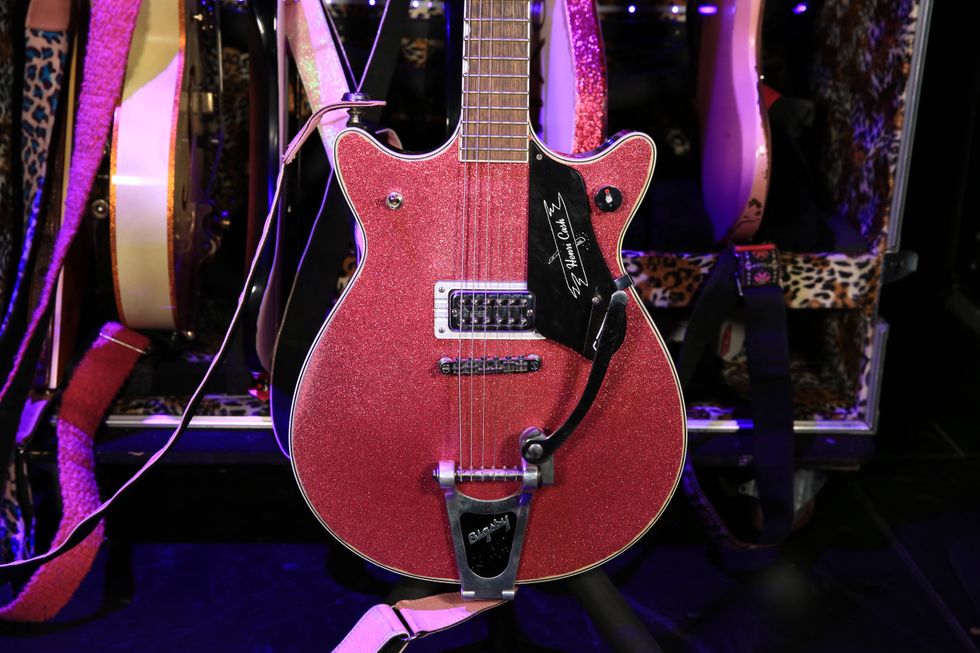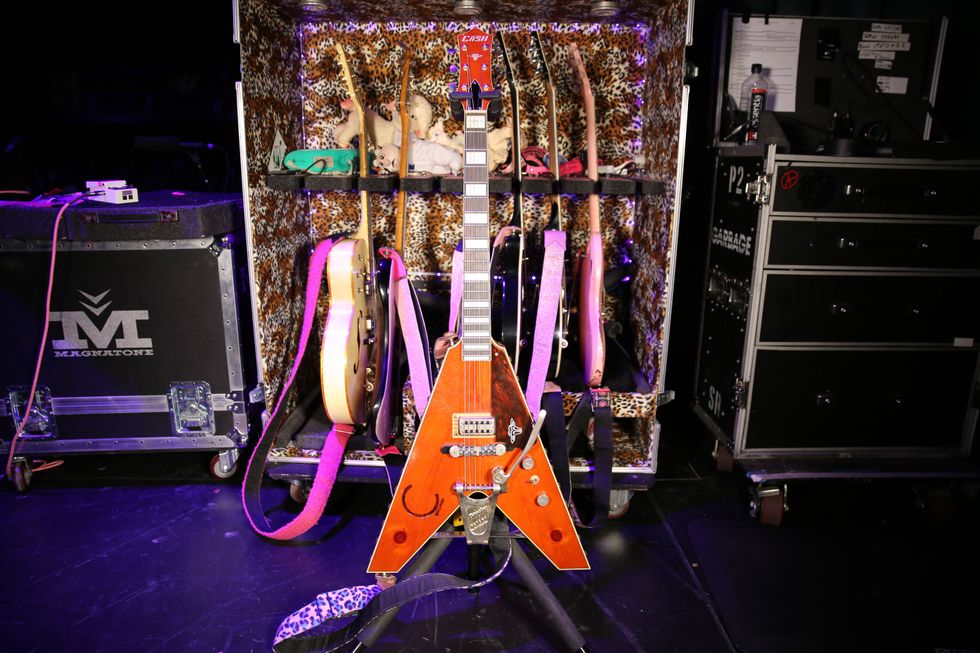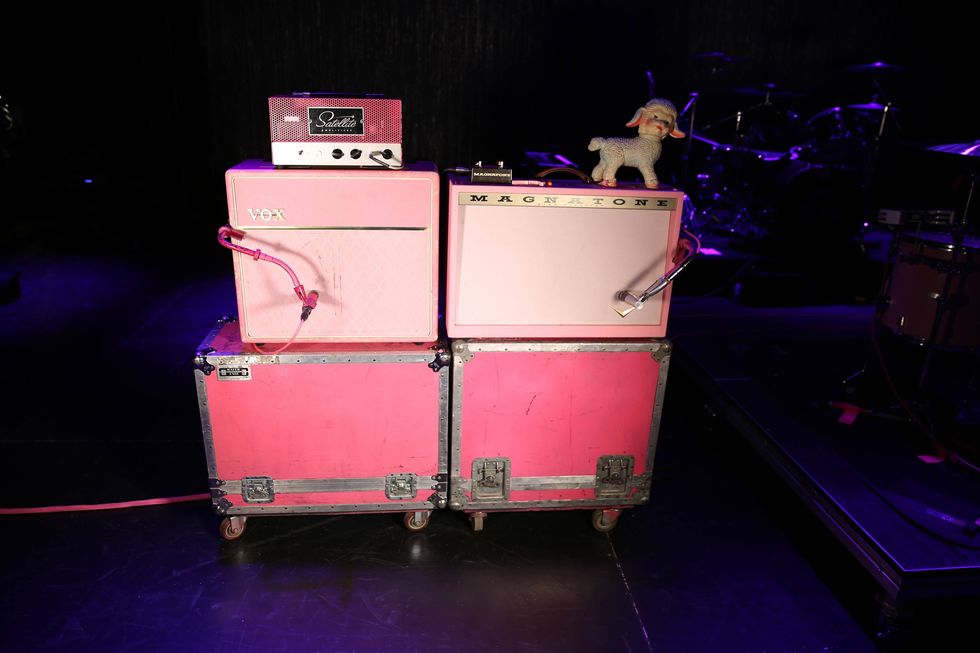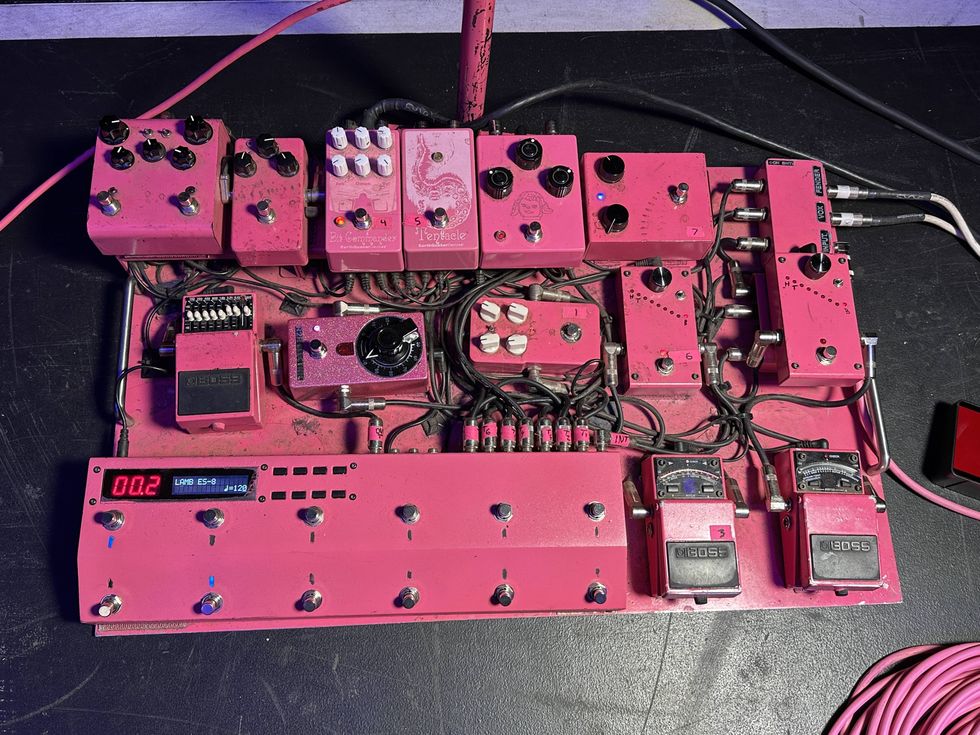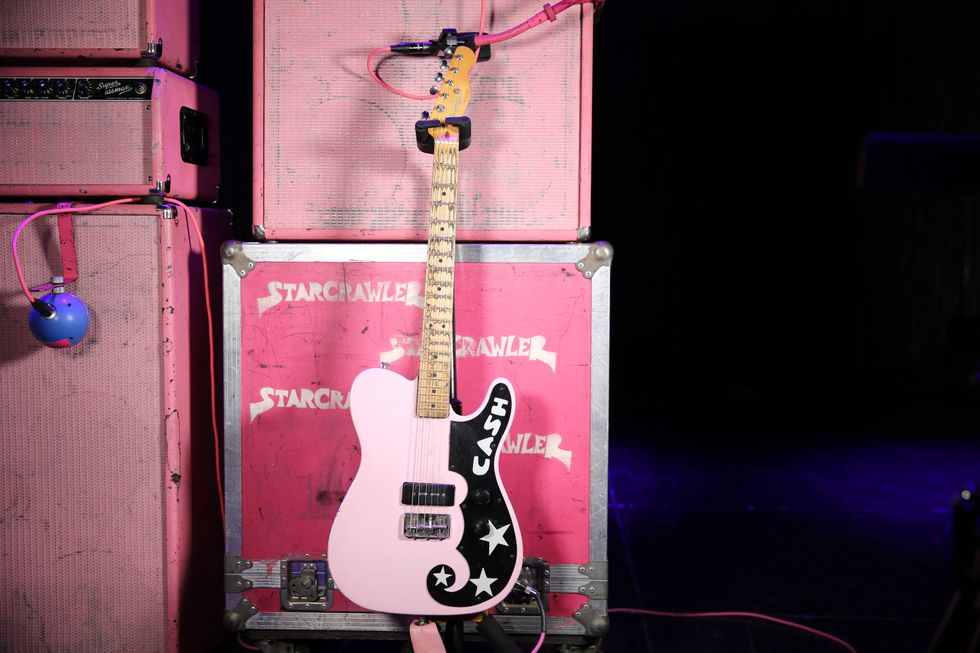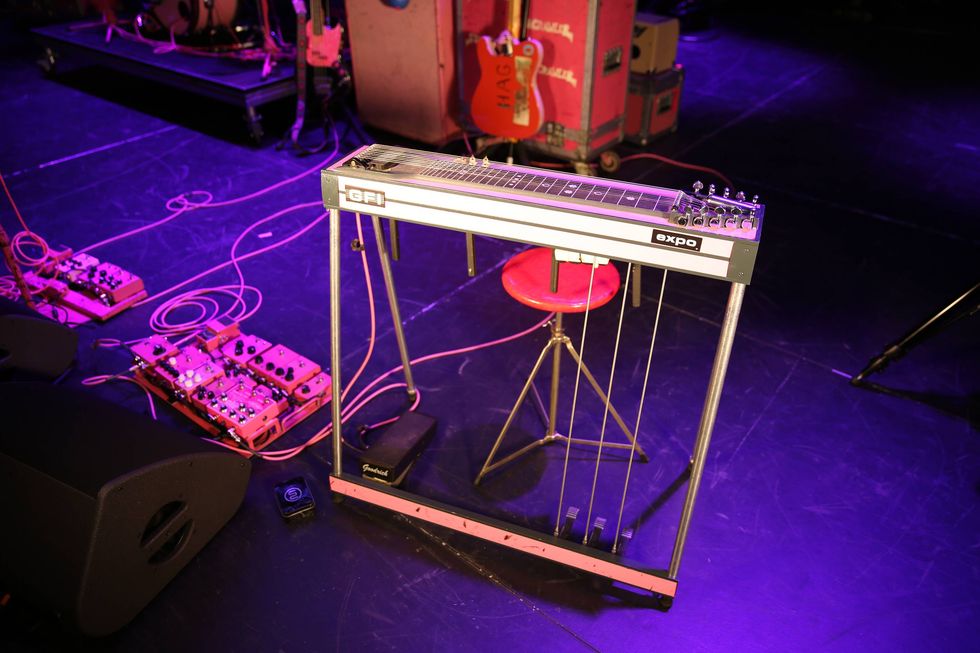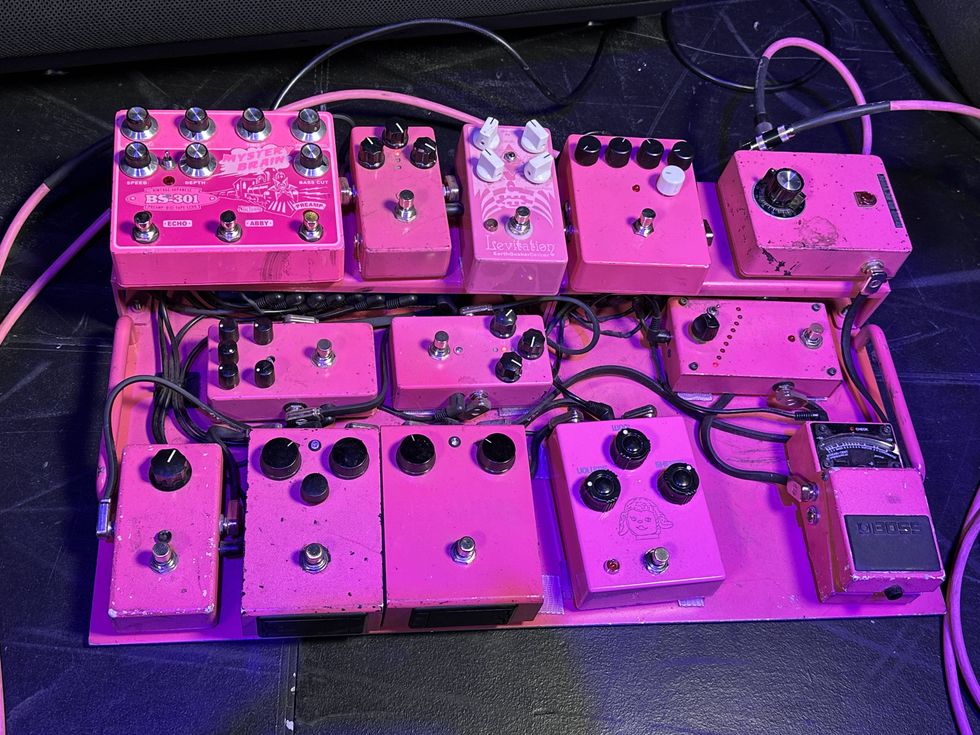Metalheads Diamond Rowe and Josh Fore keep it old school, with EMG-outfitted ESP speedsters hitting primed-and-dimed 5150s.
To most people, WWJD spells out “What Would Jesus Do?” But in the case of sworn shred disciple Diamond Rowe of Tetrarch, it stands for “What Would James (Hetfield) Do?”
“The longer you talk to me, you’re going to find out that I’m super old school with my rig,” admits Rowe. “We’ll go on tours and play festivals and people will approach us and ask, ‘why aren’t you doing this’ or ‘why aren’t you doing that’ and I’m just like, I don’t know … because Metallica did it this way [laughs].”
Tetrarch was founded in Atlanta during 2007 by friends (and guitarists) Diamond Rowe and Josh Fore. (Fore is also the band’s lead singer and handled drums for their 2013 EP Relentless). Ryan Lerner has been locked in at bass since 2009 and drummer Ruben Limas has been onboard since 2015.
The band hustled and self-released three EPs and their debut album Freak over the course of 10 grinding years. During that time, their thrashy roots broadened to incorporate nu-metal sounds delivered in a polished, more melodic, hook-laden package. That growth resulted in a deal with Napalm Records, where they released a LP (Unstable) and EP (Addicted) last year. The evolution of their sound and songcraft also saw a progression in gear.
“On the [early] EPs, I never did anything with delay pedals, phasers, or whammys—nothing—and I really wanted to try it,” Rowe told PG in 2017, around the recording of Freak. “Some of my all-time favorite bands have textural stuff like that. A lot of it came out sounding cool and we kept it. I was pretty happy about that. It’s fun to do live, too.”
Ironically, as the size of stages they played grew, Rowe’s gear footprint decreased. “I am one of those types of people,” she told PG. “I get emotional connections to my gear. The idea of switching my rig around gives me so much anxiety.”
The simplification of their rigs has only helped sharpened Tetrarch’s collective blade. And, specifically, Rowe’s reduction in pedals onstage has allowed the young flamethrower to torch crowds with a more immediate, powerful, direct punch to the gut.
Before Tetrarch’s opening slot for Sevendust at Nashville’s Wildhorse Saloon, PG’s Perry Bean stopped by to inspect the condensed-but-crushing setups of guitarists Rowe and Fore. Rowe shows off a sneaky upgrade—you’ll get plenty of clues in these captions—to her ESPs, allowing them to handle severely dropped tunings. Fore reveals how straight-forward his setup is so he can pull off riffing and singing. And both pile on the praise for their EVH bedrocks of gain.
[Brought to you by D’Addario XPND Pedalboard.]
Import Incinerator
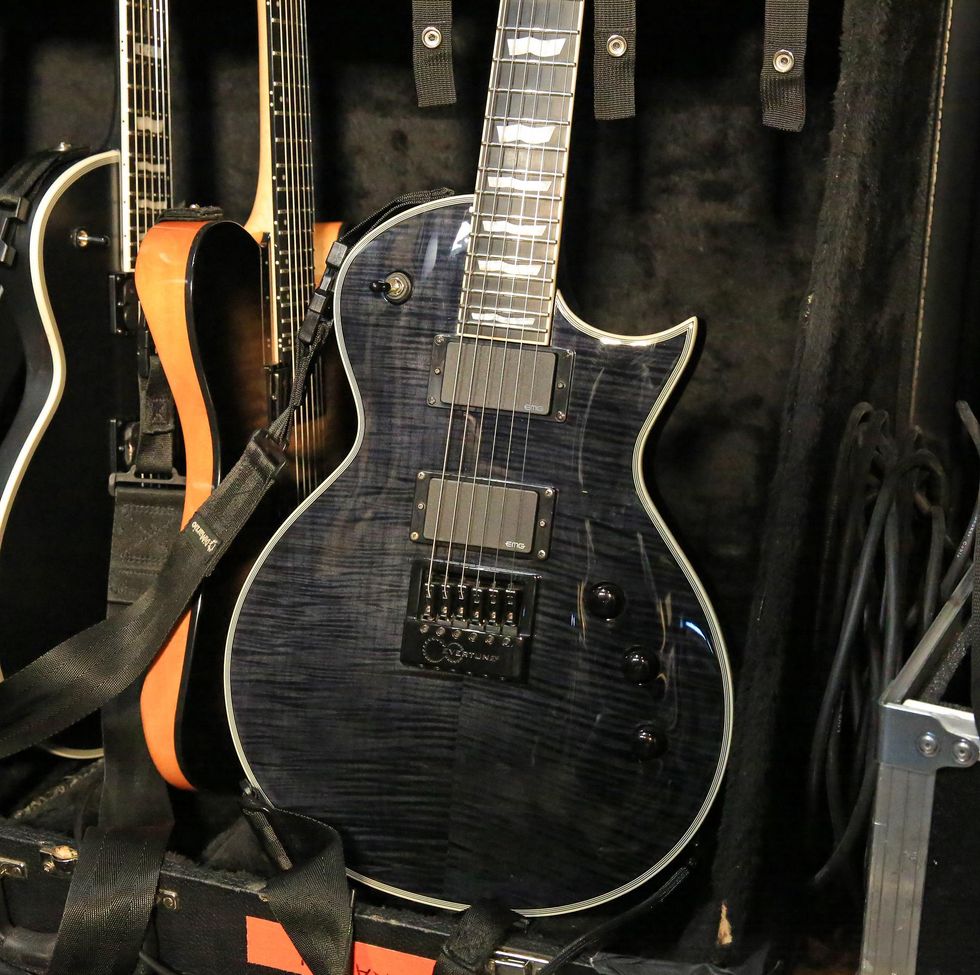
Diamond Rowe has been a longtime endorsee of ESP guitars. She typically locks in with their single-cut 6-string models, but for Freak she went even heavier.
“The 7-string I liked was the Carpenter,” Rowe told PG in 2017. “It’s a beautiful guitar. It has a big body. It is heavy weighted like I like guitars to be. It’s a perfect fit for me. I love that guitar.” Since then, the band has evolved into using drop-A and drop-B tunings while shifting back to the standard 6-string format. The above shred machine (ESP LTD Deluxe EC-1000ET) helps facilitate familiar tension thanks to its EverTune bridge. Its voice comes to life with a set of EMG 81/60 active pickups. She puts on either Ernie Ball Skinny Top Heavy Bottom (.010–.052) or EB Skinny Top/Beefy Bottom (.010–.054) strings. She attacks the strings with Dunlop Jazz III and Tortex 1.14 mm picks.
Flamethrower
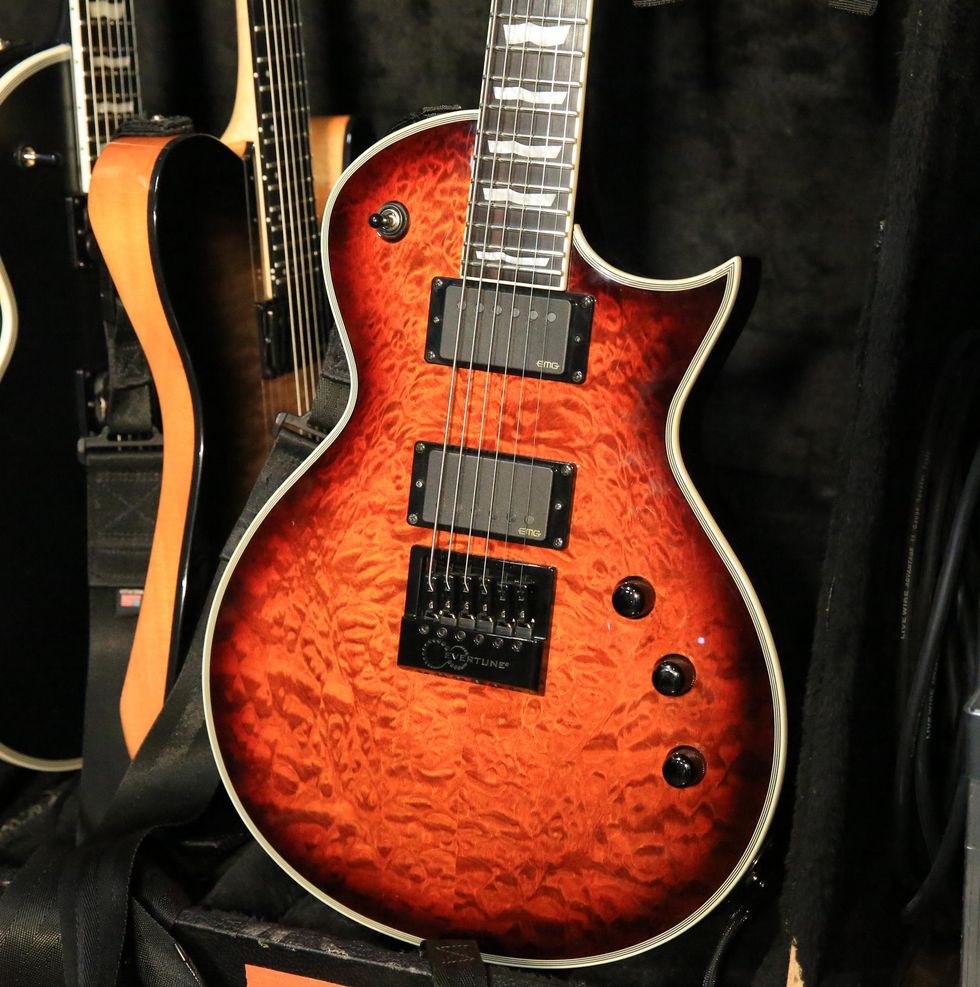
Here’s another one of Diamond’s ESP LTD Deluxe EC-1000ETs. This one is rocking a pair of EMG (57/66) active pickups, too. It rides in drop-B [B–F#–B–E–G#–C#] for the song “Take a Look Inside.”
Go for the Gold
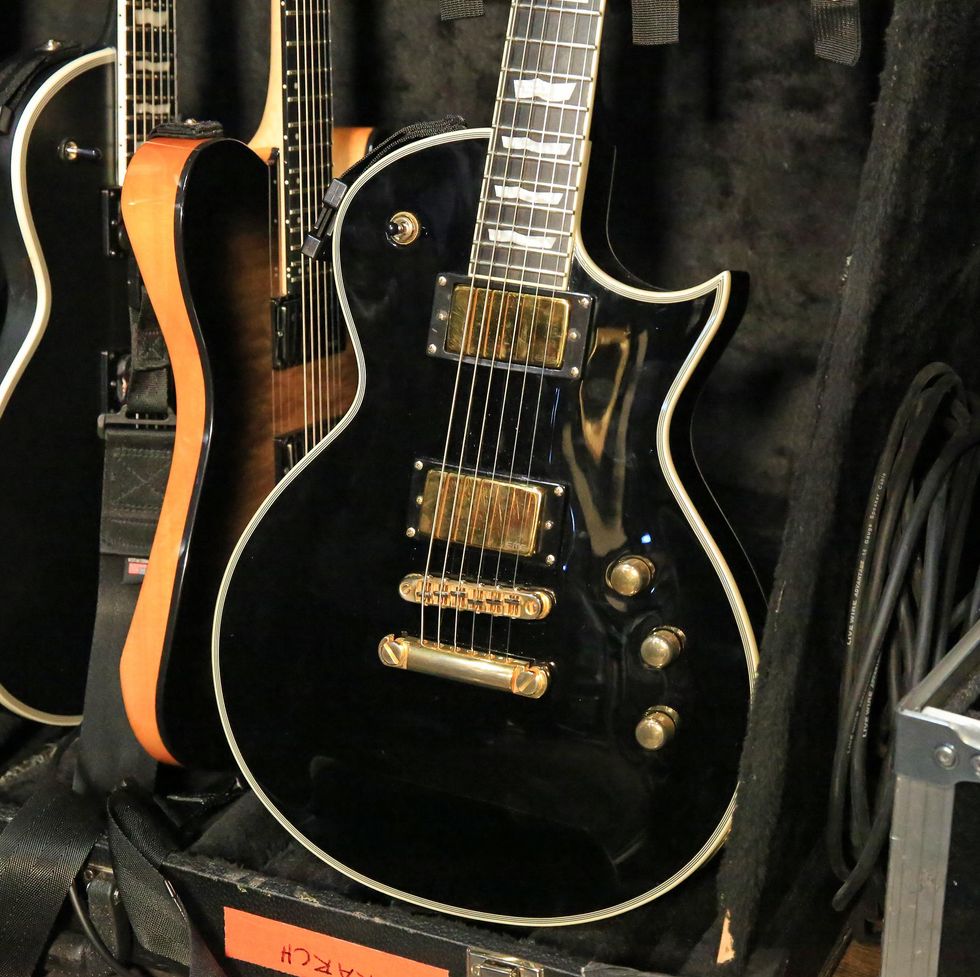
Diamond started her playing career on a Gibson Les Paul Standard. All the guitars that followed had to pass her “toy test.”
“It’s probably because my first main guitar was a Gibson Les Paul Standard and it’s a heavy-weighted guitar,” Rowe admitted to PG. “Anytime I pick up anything lightweight I feel like I’m playing with a toy. It’s just a preference. I like feeling like I have something around my neck.”
The above ESP LTD Deluxe EC-1000T CTM is the heaviest, mightiest single-cut on tour with her. The gold-capped EMGs are still her preferred 81/60 combo. This sees the stage for songs from the band’s earlier EPs, when they lived in drop-C or D-standard tunings.
Mean Green
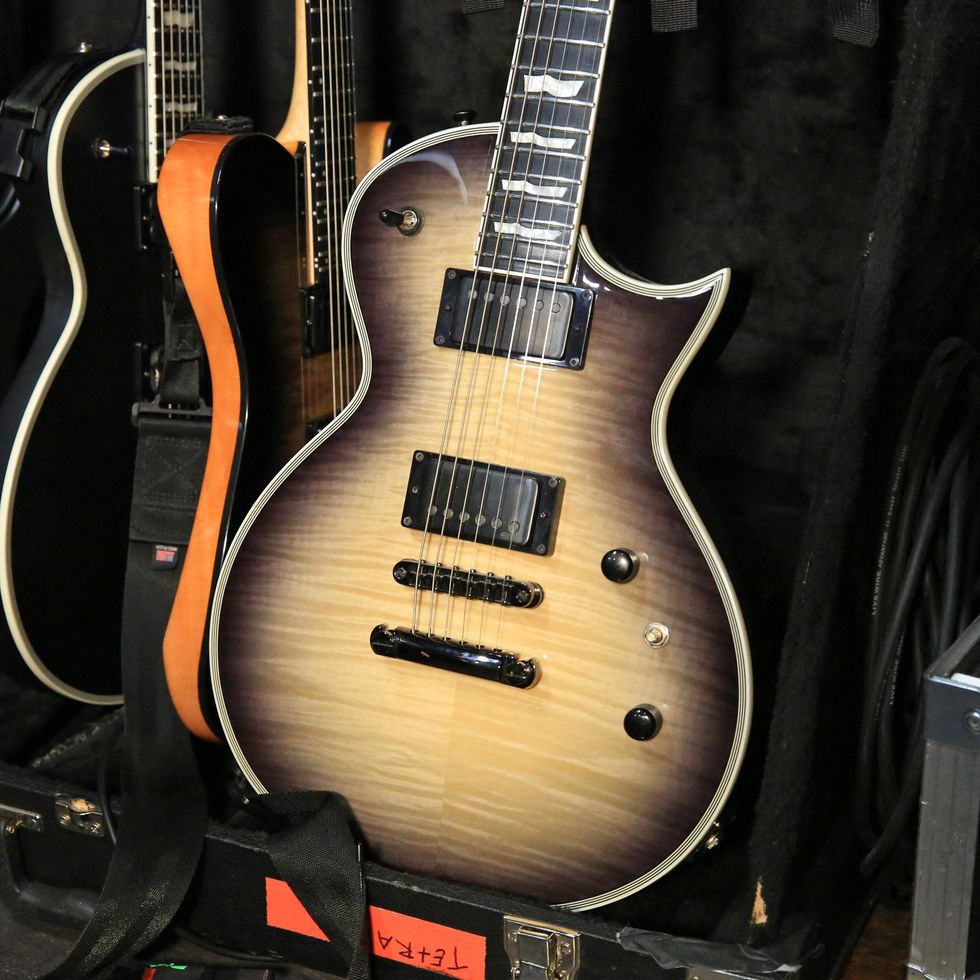
Rowe’s latest acquisition is this ESP E-II Eclipse Full Thickness that came to her stock with a set of EMGs (57TW/66TW) that offer coil-splitting for each pickup with individual push-pull controls on each volume knob.
Super-Smooth Smasher
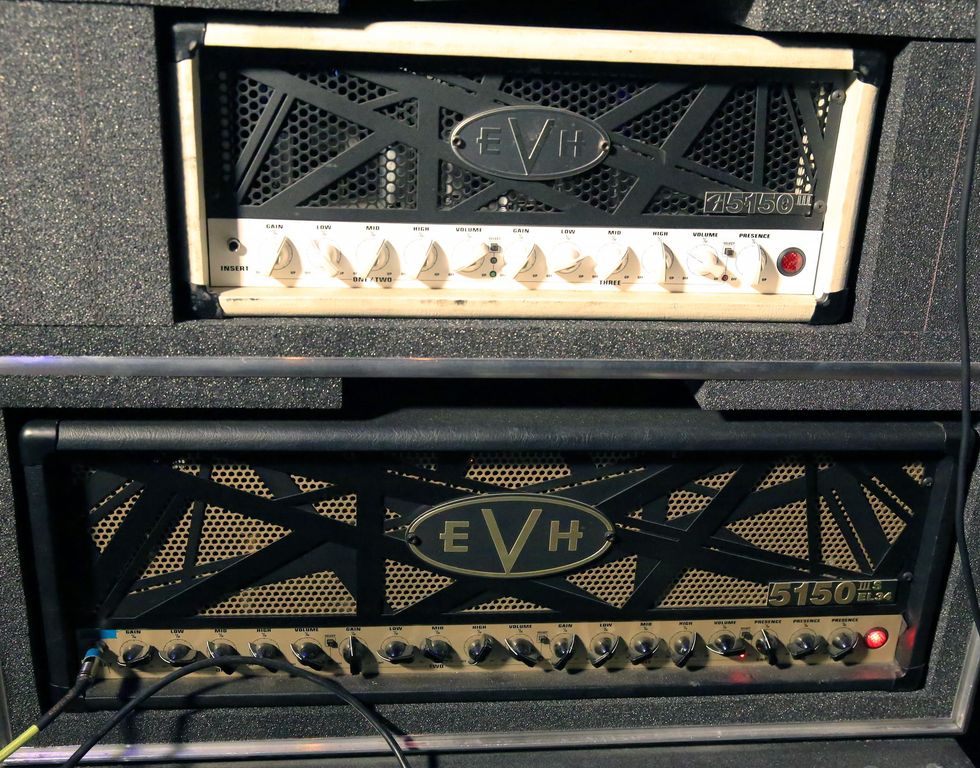
Rowe had done several tours with her reliable Mesa/Boogie Triple Rec. However, whenever the band hit the studio, they’d track with a Peavey 6505.
“[For Freak] we used a Peavey 6505, and that’s the secret to studio tone for metal,” stated Rowe. “That or an EVH. That’s the tone that’s flawless for metal records and that’s predominantly what we used on this record. I think that’s on every recording we’ve ever done.”
So, when she was approached by EVH/Fender to try out some amps, she already knew things would get cooking. She tested the 50W EVH 5150 III alongside her Boogie for a few tours. But her world got rocked once introduced to the 100W EVH 5150 III 100S EL34. “I started playing it and immediately loved it,” said Rowe. “It has a smooth, saturated, high-gain tone that just meshes with Josh’s 50W 5150 III.”
Dirt and Dive Bombs
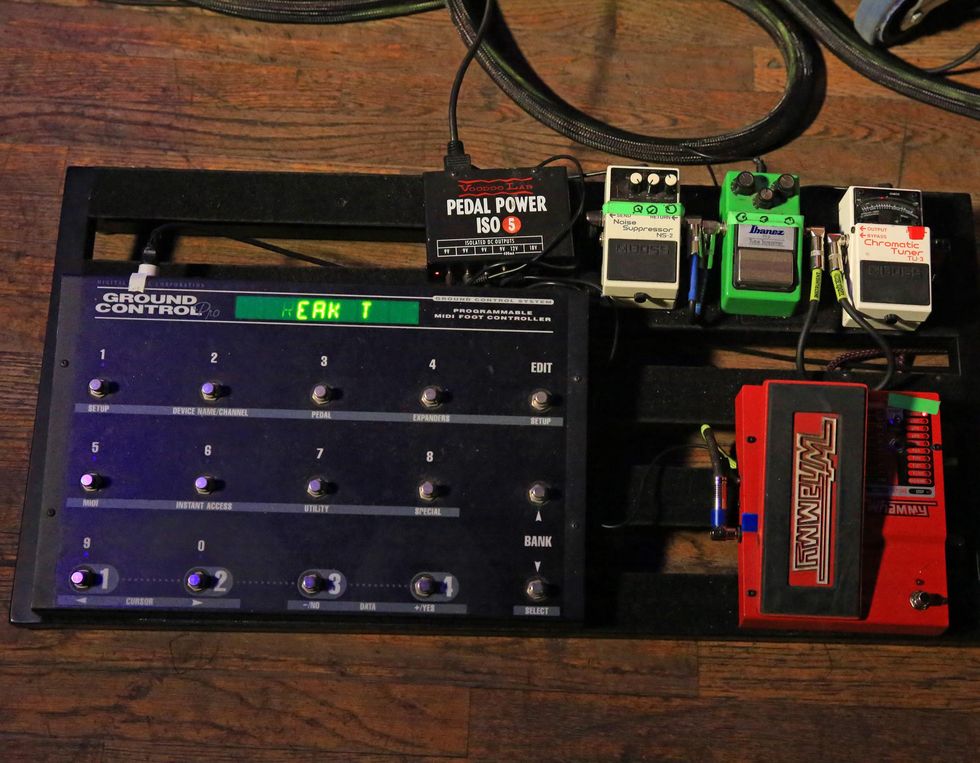
Diamond keeps things succinct on her pedalboard. For now, she only has two effects living in her stage setup: an always-on Ibanez TS9 Tube Screamer and a DigiTech Whammy for pure fun and note obliterating. A pair of Boss utilitarian stomps—NS-2 Noise Suppressor and TU-3 Chromatic Tuner—keep the guitars clean. Voodoo Lab has her pedals running and organized with a Pedal Power ISO-5 and Ground Control Pro MIDI switcher.
“Freak Tone”
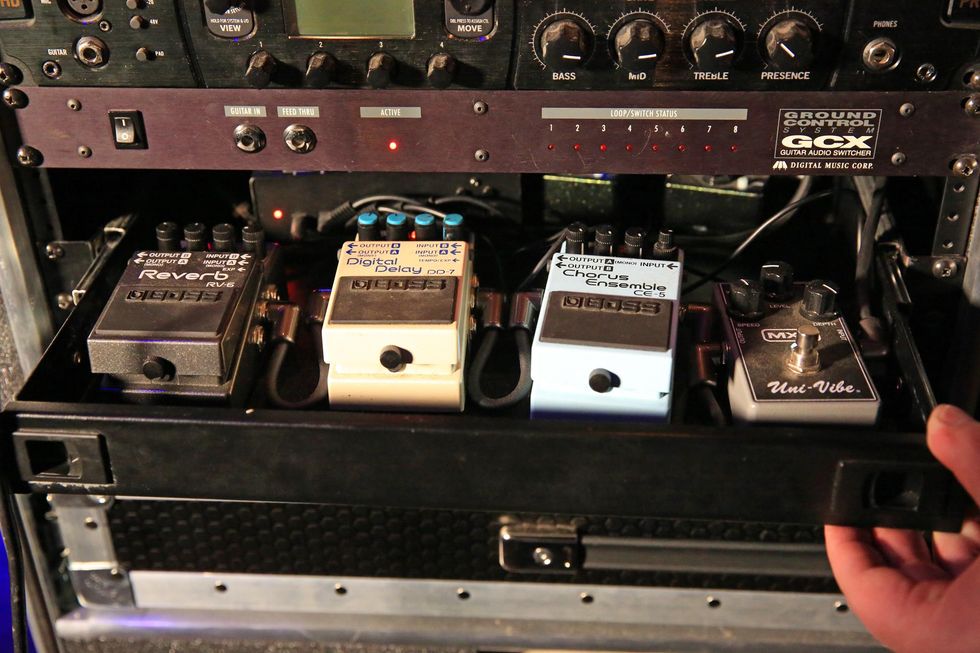
Diamond has a rack that holds the pieces that make up her “freak tone” patch. It engages a Boss RV-6 Reverb, Boss DD-7 Digital Delay, Boss CE-5 Chorus Ensemble, and a MXR Uni-Vibe. Around back she has a pair of MXR Carbon Copy delays, too. The rack goodies are juiced with a Voodoo Lab Pedal Power 2 Plus.
Simple Screamin’ Demon
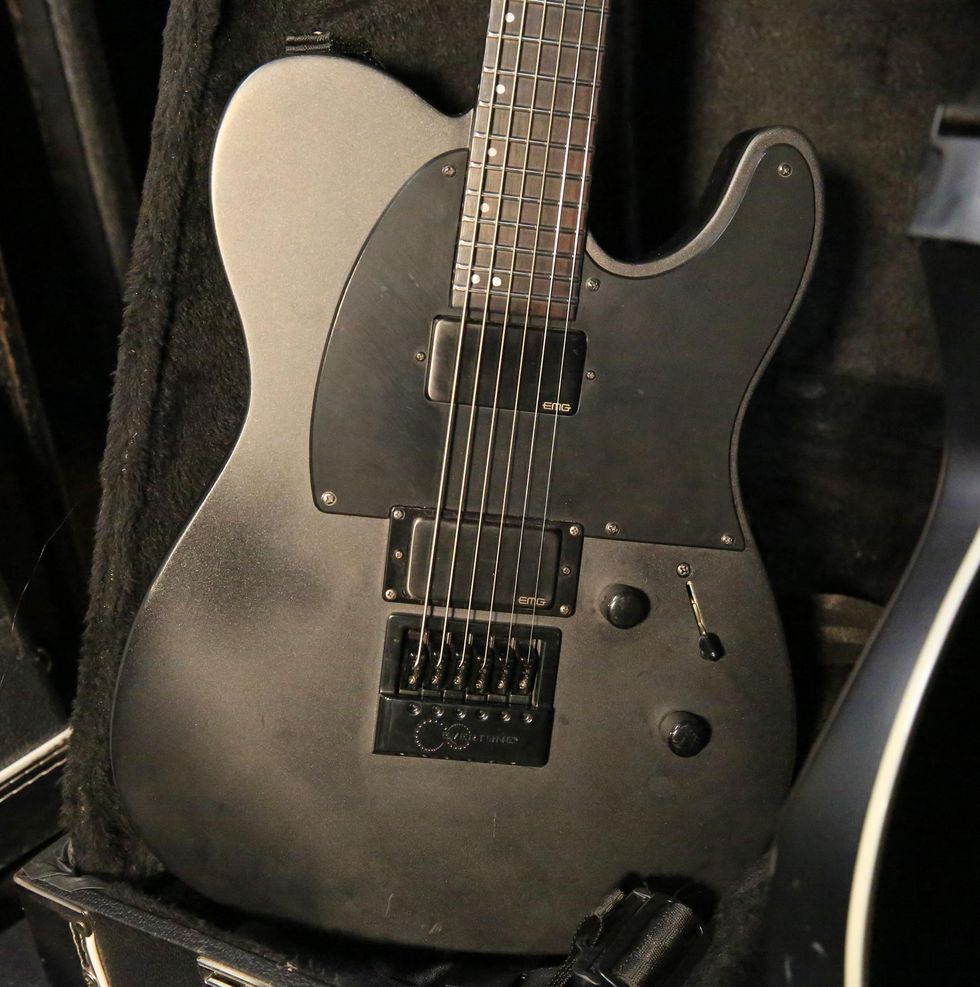
“I’m so simple as a guitarist, man” concedes Tetrarch frontman Josh Fore. “I never use the neck pickup and I might have tried the coil-split once [laughs].” Josh Fore’s go-to stage ace is an ESP LTD Deluxe TE-1000 EverTune that has a duo of EMGs (60TW-R and 81) and is finished with stealthy charcoal metallic satin. This one stays in drop-A tuning. All of Fore’s instruments take Ernie Ball Mammoth Slinkys (.012 –.062).
The Bee’s Knees
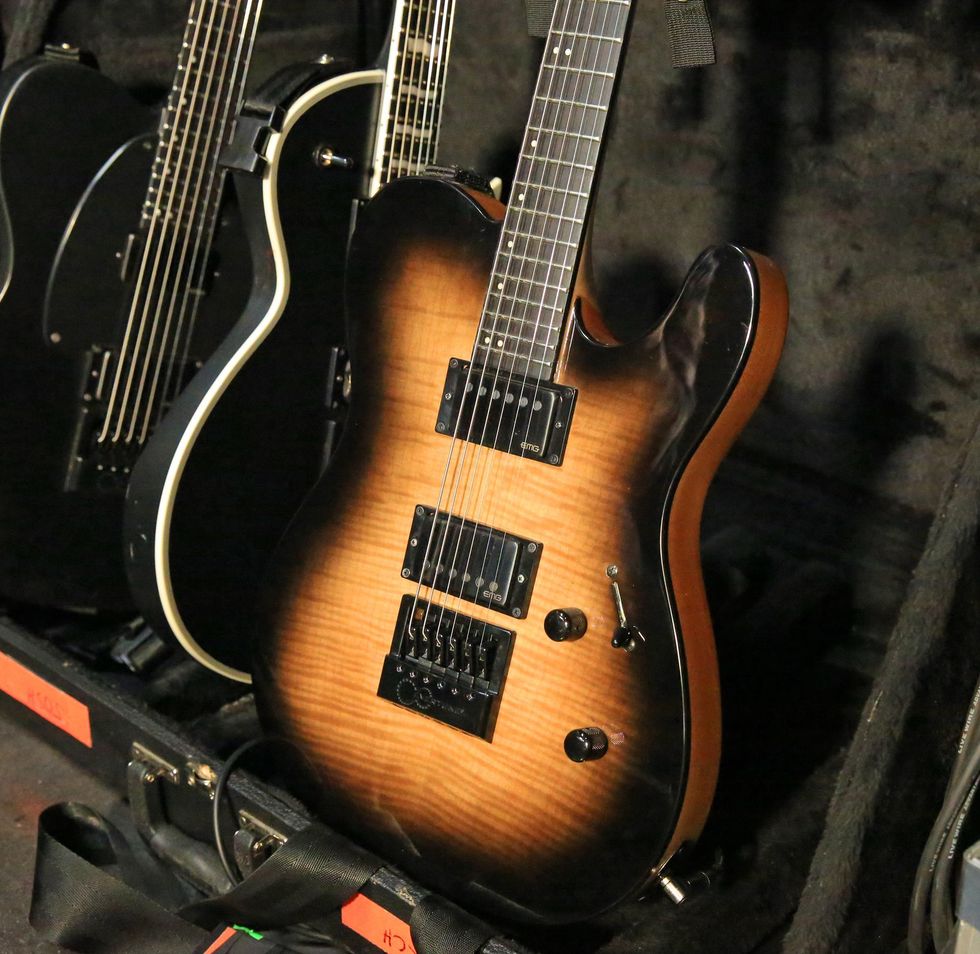
His first T-style from ESP was this honeycomb burst LTD Deluxe TE-1000 EverTune that barks with EMGs (57/66) and typically lives in drop-B tuning.
Bonded in Blood
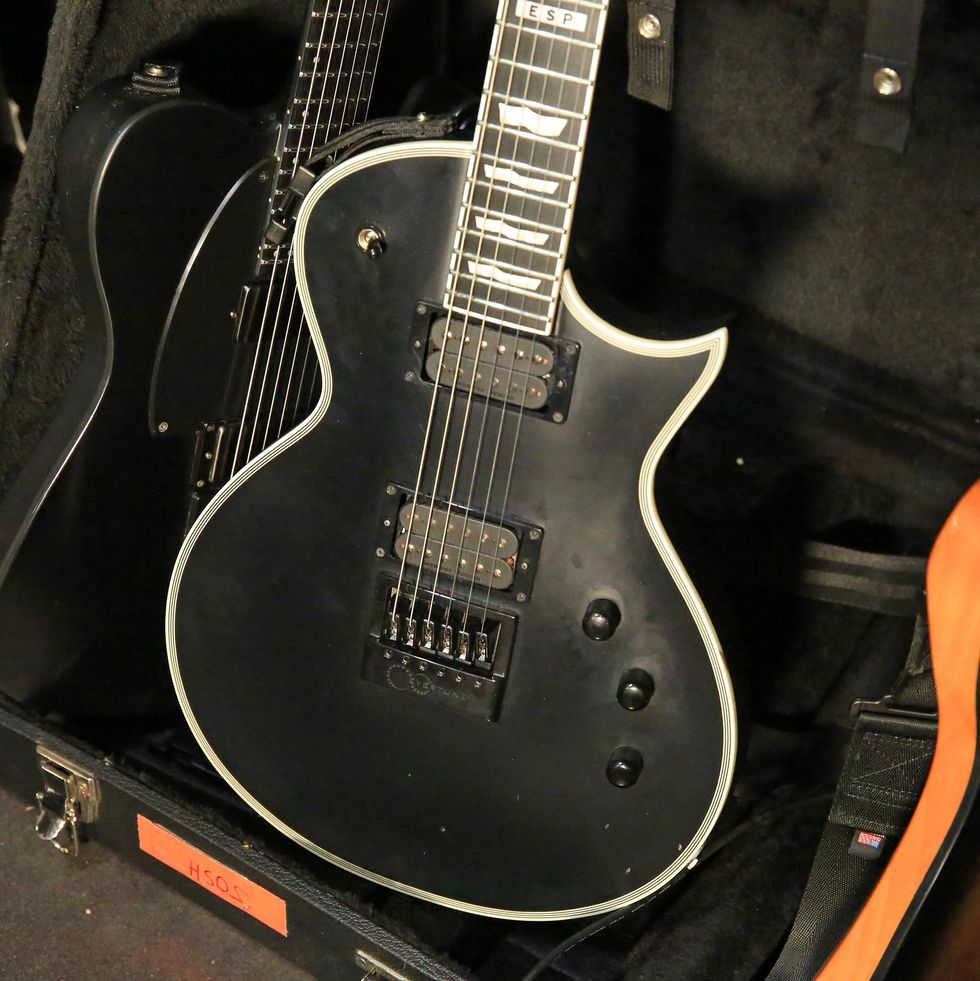
Fore’s newest score is this slick ESP E-II Eclipse EverTune that is loaded with passive Seymour Duncans—Pegasus (bridge) and Sentient (neck)—and decked out with 22 jumbo frets, Dunlop Straploks, Gotoh locking tuners, and a graphite nut. If you look closely down by the controls, you’ll notice a darkened smudge on the binding that’s actually Josh’s blood from a rowdy show in Santa Ana. He sliced his finger during the second song of the set and, with a true showman’s attitude, continued playing while also personalizing his new prize. The bloody bomber hunkers down in drop-C tuning for Tetrarch’s earliest material.
Take Your Pick
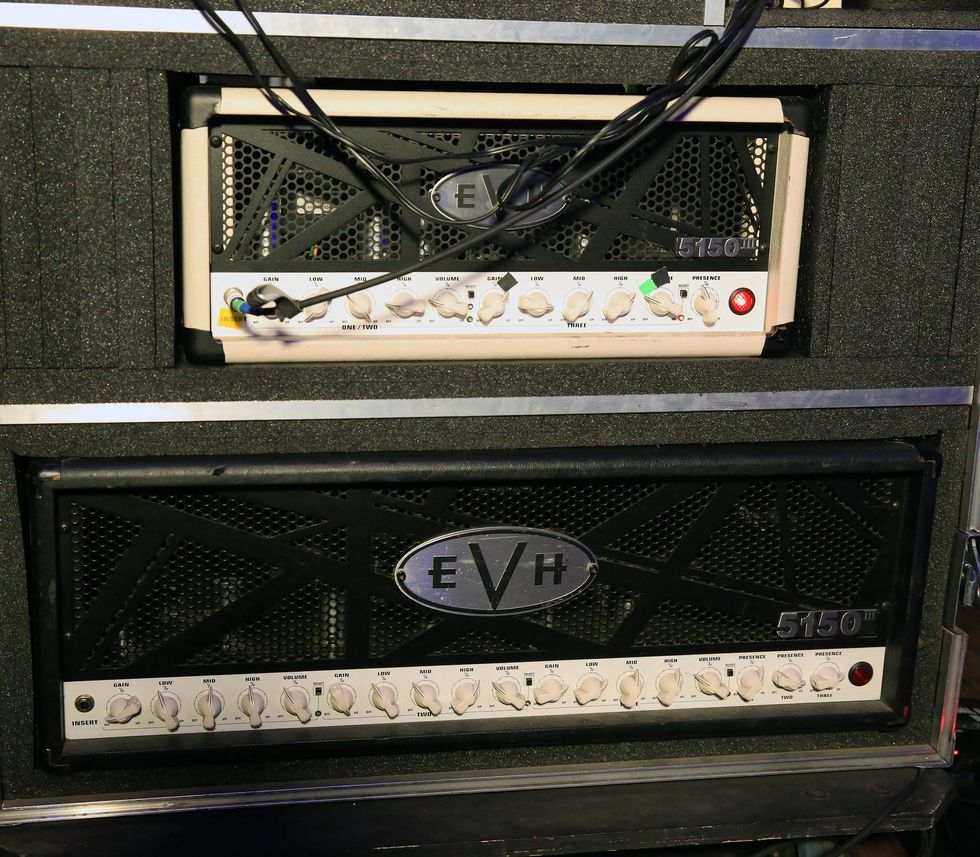
Matching Rowe’s sonic swarm, Fore totes around a couple of EVH heads. Currently, he’s been preferring the 50W EVH 5150 III, but when additional sting is needed, he’s got the 100W down below. The only pedals in his entire chain are a duet of Boss NS-2 Noise Suppressors—one in front of the amp and one after—that kills any unwanted buzz and hiss.





![Rig Rundown: Russian Circles’ Mike Sullivan [2025]](https://www.premierguitar.com/media-library/youtube.jpg?id=62303631&width=1245&height=700&quality=70&coordinates=0%2C0%2C0%2C0)



















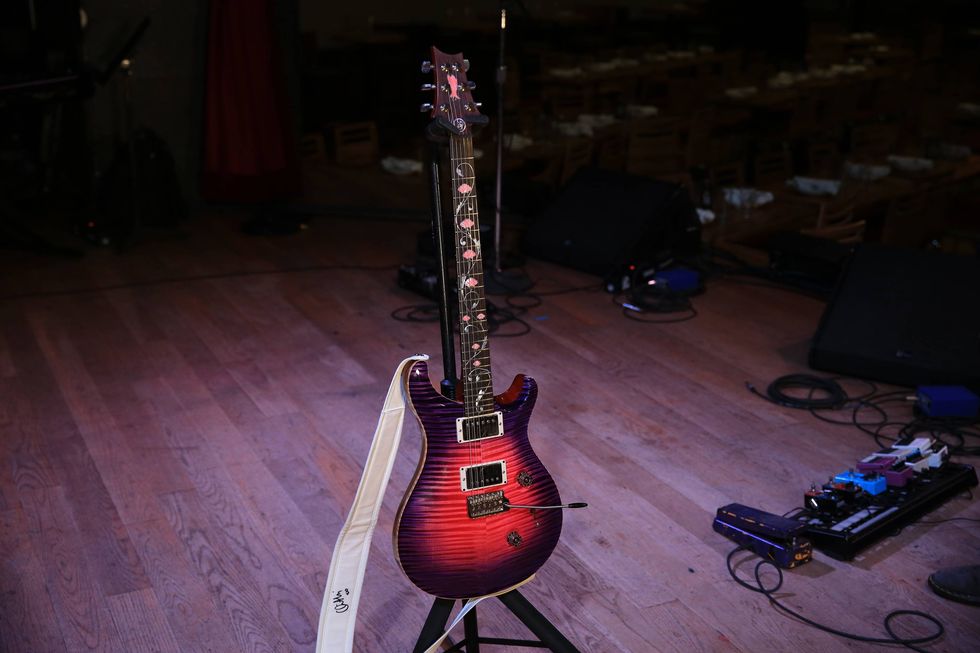
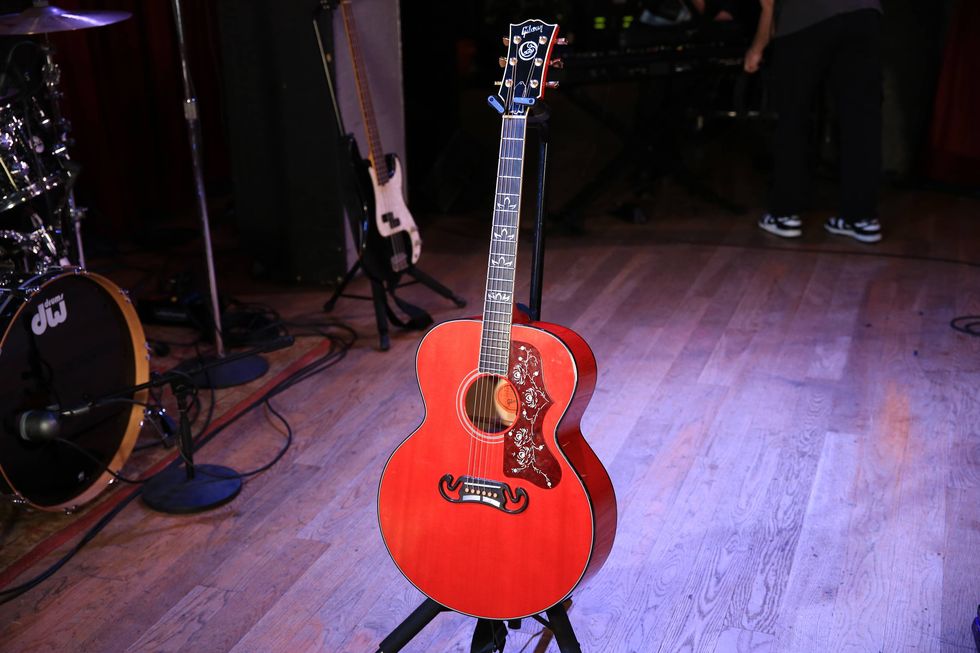
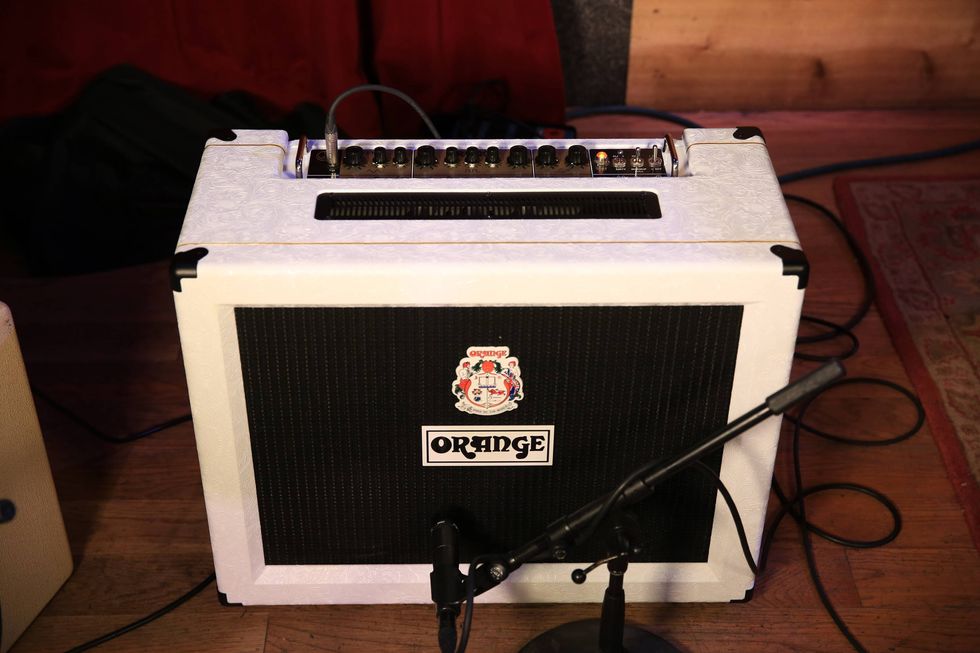
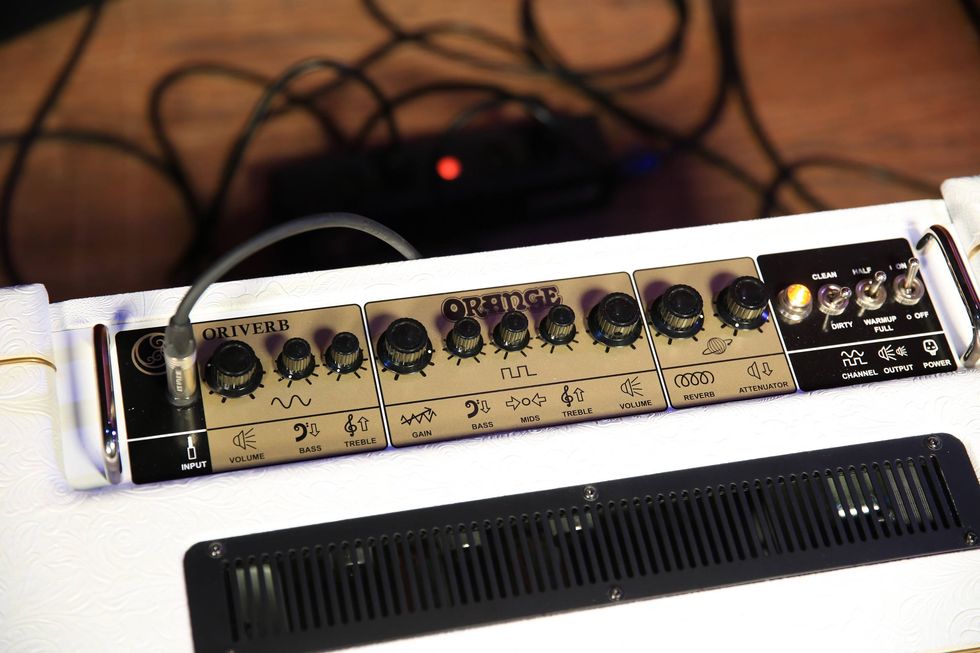
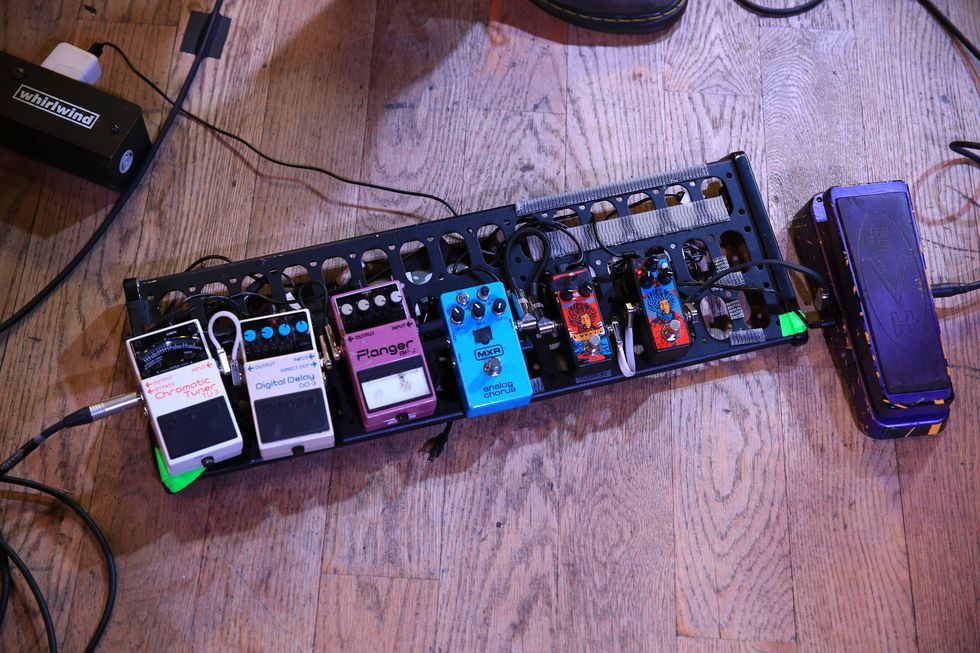

![Rig Rundown: AFI [2025]](https://www.premierguitar.com/media-library/youtube.jpg?id=62064741&width=1245&height=700&quality=70&coordinates=0%2C0%2C0%2C0)




















 Zach loves his Sovtek Mig 60 head, which he plays through a cab he built himself at a pipe-organ shop in Denver. Every glue joint is lined with thin leather for maximum air tightness, and it’s stocked with Celestion G12M Greenback speakers.
Zach loves his Sovtek Mig 60 head, which he plays through a cab he built himself at a pipe-organ shop in Denver. Every glue joint is lined with thin leather for maximum air tightness, and it’s stocked with Celestion G12M Greenback speakers.







